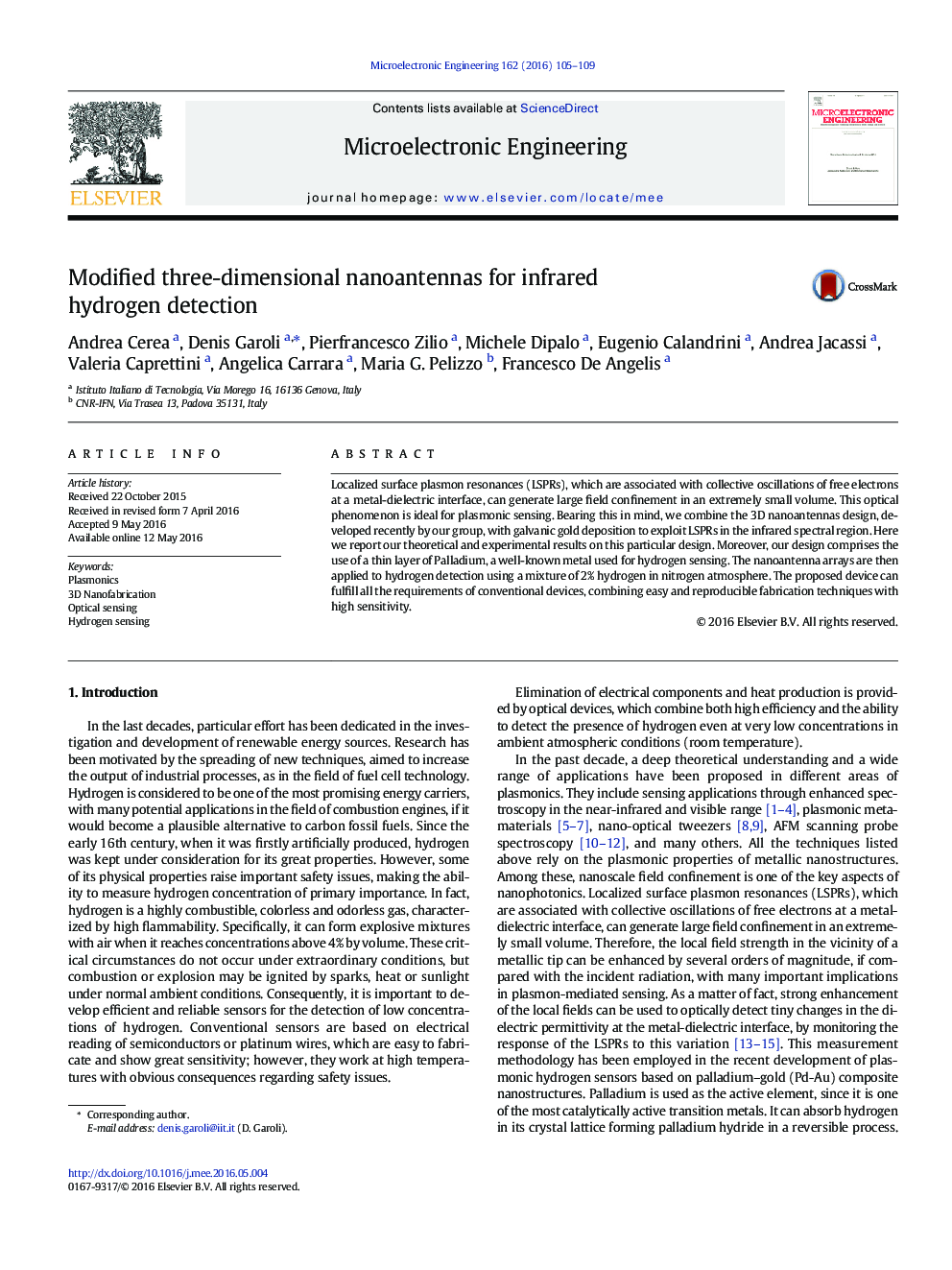| Article ID | Journal | Published Year | Pages | File Type |
|---|---|---|---|---|
| 544121 | Microelectronic Engineering | 2016 | 5 Pages |
•Fabrication of 3D nanoantennas with a novel design•Theoretical investigations suggest that the design can support very strong resonance in the NIR.•Galvanic gold deposition showed good uniformity and high reproducibility.•Very good response to hydrogen exposure, resulting in a resonance shift of about 250 nm at 4.5 μm
Localized surface plasmon resonances (LSPRs), which are associated with collective oscillations of free electrons at a metal-dielectric interface, can generate large field confinement in an extremely small volume. This optical phenomenon is ideal for plasmonic sensing. Bearing this in mind, we combine the 3D nanoantennas design, developed recently by our group, with galvanic gold deposition to exploit LSPRs in the infrared spectral region. Here we report our theoretical and experimental results on this particular design. Moreover, our design comprises the use of a thin layer of Palladium, a well-known metal used for hydrogen sensing. The nanoantenna arrays are then applied to hydrogen detection using a mixture of 2% hydrogen in nitrogen atmosphere. The proposed device can fulfill all the requirements of conventional devices, combining easy and reproducible fabrication techniques with high sensitivity.
Graphical abstractFigure optionsDownload full-size imageDownload as PowerPoint slide
